
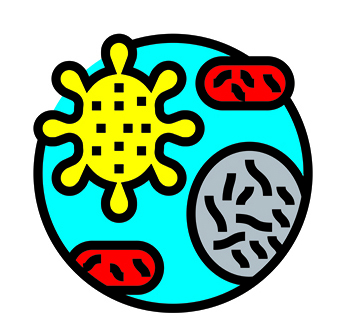
Talking Heads: Edible adventures
Algae, once a marine curiosity, is now embarking on a culinary journey to become a nutrient-packed superfood that offers a sustainable and delicious way to diversify our diets. As Amity Reed discovers, with advancements in cultivation and processing, algae is poised to become a major player in the food industry
Although algae has been a staple food source for centuries in many Asian countries, it has only been 50 or so years since it entered the Western diet. Before Japan developed microalgae strains such as Spirulina and Chlorella for, among other things, health supplements in the 1970s, macroalgae (seaweed) was the primary source of this superfood. When companies in Europe and the Americas began cultivating algae, most opted for a different production method to open-pond cultivation. Due to its controlled, high-yield processes and minimal use of water, energy, and land compared to freshwater growth using photosynthesis, fermentation in closed bioreactors soon became the favored and most efficient method to mass produce algae outside of Asia. Now, as environmental consciousness rises along with the global population, the food industry turns with increasing urgency to microalgae cultivation as a solution to both crises.
With a protein content of 60-70% and a plethora of essential vitamins, minerals, antioxidants, and fatty acids crucial to heart and brain health, microalgae is one of the most nutrient-dense proteins around. In addition to the health benefits, CO2 emissions from its production is 40 times' lower than for meat and significantly reduces land use and water wastage. Another tick is that consumers are drawn to healthier diets and sustainable, ethical products. Although there have been consumer concerns about the salty or earthy taste that algae ingredients can potentially lend to foods, the development of white, flavor-neutral strains is beginning to put those concerns to rest. It’s even being used to make cakes and other sweet foods!
Advancing algae innovation
To meet the demand for quality ingredients at high volume, technological advancements in this sector are progressing to keep pace. From the systems and equipment used to cultivate carefully selected strains into a biomass, to the harvesting and processing techniques utilized to turn that biomass into a variety of food products, innovation continues to grow almost as quickly as the algae itself. As advances in heterotrophic and mixotrophic cultivation evolve alongside bioreactor technologies and more efficient fermentation processes – and with strategies to reduce the environmental impact forging ahead at speed – there is reason to believe that algae will be a major player in the protein production industry for a long time to come.

Brevel
As a leader in the use of mixotrophy – a method that combines fermentation and photosynthesis into a single process – Brevel holds a unique position in the algae industry. With its patented technology enabling large-scale fermentation, the company has seen success as the first (and currently only) algae cultivator to build and operate industrial-scale systems of this nature. With countless uses for the ingredients it supplies, Brevel’s appeal is widespread across much of the food industry, though its current focus is on dairy alternatives – cheese, yogurt, milk, etc.

“We perform full fractionation (aka biorefinery) of the biomass into valuable ingredients,” explains Yonatan Golan, CEO, describing the harvesting and processing techniques the Israeli food tech uses. “These include soluble, white, flavor-neutral and functional proteins, highly functional polar lipids, carotenoids, soluble fibers, and more. The protein is extracted in a unique physical process and the lipids and carotenoids in food-grade solvents. Brevel has a stringent quality control methodology and produces very high quality and pure products.”
Scaling and cost challenges
A challenge the company has overcome in the use of this process is the prevention of contamination, an essential component of such a complex configuration. But the real challenges for Brevel have occurred elsewhere, primarily in scaling and commercialization. Golan describes the opening of its first commercial-scale factory and embarking on new JVs with global partners as significant challenges, as well as cost. “To be relevant at scale for the food industry as a main ingredient – and not simply as a niche solution – microalgae-based nutrition must become a commodity and be at or near cost parity with existing alternatives,” Golan continues. “The only way to get to cost parity with microalgae protein is to extract more commercial value than the protein alone. Thus, by increasing the profitability of the microalgae, protein can [achieve] cost-parity with pea and even soy protein and be relevant for the mainstream food industry.”
And how does the company select the strains deemed most suitable for its specific applications? “We use non-GMO strains that are part of the Chlorella family,” Golan reports. “These strains are very robust, exhibit extremely high growth rates at the provided conditions (fermentation plus light) and have a very straightforward regulatory path as they have been consumed already for many decades. The quality of protein, functional lipids and carotenoids are very high and have a significant commercial value.”
As with most alternative protein producers, a reduction in environmental impact is important to Brevel’s mission too. Through its use of visual data comparing the land use, water consumption and CO2 emissions for beef, soy and microalgae protein, Brevel helps consumers better understand the benefits to the planet. A no-waste approach is also a core part of the firm's messaging. “There is almost no waste both because 100% of the biomass is fractionated into different products, and nutrient uptake is highly controlled, with almost 100% of nutrients consumed,” Golan states. “Once the microalgae are separated from the water, there are no toxins or excess media leftovers and the water can be re-used. As cultivation takes place indoors in large reactors, our facilities can be built anywhere, including non-arable land, warm or cold climates – wherever you want!”
Because the cultivation is done indoors in large reactors, Brevel’s facilities can be built anywhere on the planet
Market opportunities are varied and multifaceted. By stressing the health benefits of its products’ full amino acid profile and clean production, cost parity with other proteins, flavor-neutral taste, adaptable white color, functionality as a soluble, emulsifier, or for use in gelling, and environmental sustainability, the company has positioned itself as a viable solution to the growing demand for alternative protein sources. There is ample opportunity for the market to expand, too, with technological advancements leading the way.
Golan believes that more work on the food technology side is needed to advance the use of microalgae protein, citing extrusion, secondary fermentation, and advanced formulations as key. “To date, most of these processes have only been applied in microalgae biomass, and at limited scales and scope,” he states. “Further understanding the usages and applications in which microalgae protein can be relevant is very important for the next stages.”
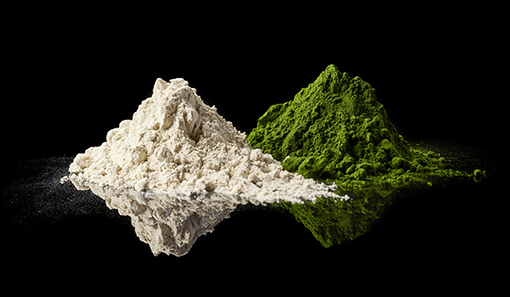
Aliga
Most European companies cultivating microalgae today do so through the use of heterotrophic processes in bioreactors. One of the key benefits is that it is significantly more efficient and offers opportunities for greater scalability. “In contrast to traditional phototrophic cultivation – which typically yields up to 3g of biomass per liter – our advanced fermentation technology achieves yields exceeding 100g/liter, with daily harvests possible,” explains David Erlandsson, Co-Founder & Sales Director at Aliga. “Increasing production output merely requires the installation of additional or larger fermentation bioreactors. From our perspective, heterotrophic fermentation stands as the most efficient and innovative production system available in the market today. It offers exceptional yield, scalability to meet industry demands, and consistently stable production batch after batch, which is an essential requirement for the food, feed, and supplement industries.

And what about the natural resources required to create, run and maintain these bioreactors? Compared to other agricultural methods, microalgae cultivation has a relatively low environmental impact. Not only can algae absorb carbon dioxide – making it an important tool in mitigating climate change – but it can be cultivated without competing for land with traditionally grown food crops. “Our production sites are strategically located on industrial land, eliminating the need for farmland and allowing food production in areas typically unsuitable for agriculture,” Erlandsson continues. “Moreover, as our cultivation process occurs within closed, sterile bioreactors, the resultant microalgae are entirely free from heavy metals, pesticides, and other contaminants.”
Although the energy required for heterotrophic production is more intensive compared with open cultivation methods that utilize sunlight – which is more common in Asia – Erlandsson believes this is offset by the long-term sustainability benefits. “With our European production facilities achieving yields of up to 100g of algae per liter of biomass, the overall energy consumption, water usage, and emissions per kilogram of powder produced are highly competitive,” he reports. “This is especially true when compared with Asian-produced products, which incur significant environmental costs due to long-distance transportation.”
As our cultivation process occurs within closed, sterile bioreactors, the resultant microalgae are entirely free from heavy metals, pesticides, and other contaminants
The versatility and variety of microalgae strains also make for innovative products and practices. By focusing on the Chlorella strain, Aliga’s R&D team was able to thoroughly test variations of it to meet their specifications for nutritional value and growth rate. The subsequent development of a chlorophyll-free strain, with a neutral taste and color, has become the foundation of Aliga’s product portfolio. “The ambition with our white Chlorella was to overcome the challenges associated with green algae products when used in food,” Erlandsson reports. “It only consists of fermented and dried Chlorella algae, and can be used as a clean-label ingredient in food formulations, offering the benefits of algae without the strong taste or green color that often limit its use in food and beverage products.”
Preserving nutritional value
The production process utilized by Aliga when harvesting biomass directly from its bioreactors and spray-drying it immediately into a powder preserves the nutritional value of algae protein and is more straightforward than processes that concentrate it, Erlandsson believes. “We don’t extract protein to create an ‘algae protein’ powder,” he says. Why? “Firstly, algae protein concentrates and isolates are considered novel food ingredients, requiring lengthy approval processes. Secondly, algae are naturally rich in micronutrients and minerals, which are lost when producing protein concentrates or isolates. This diminishes some of the core benefits algae offer. Instead, we’ve taken a different path by developing white Chlorella with enhanced organoleptic properties. This allows it to be seamlessly incorporated into foods while retaining
its valuable micronutrients.”
The versatility of white Chlorella has generated high demand from the food, feed and dietary supplement industries, making Aliga one of the leading algae producers in Europe, with a strong presence in the global marketplace. Looking toward the future, Erlandsson sees consumer recognition of the benefits of algae in their diets as a driver of further advancements. “As consumer interest grows, food manufacturers are more likely to innovate and develop new formulations that include algae, creating a ripple effect that ultimately boosts demand on our end,” he says. “In this way, consumer desirability plays a crucial role in shaping the future of algae as a staple in food production.”
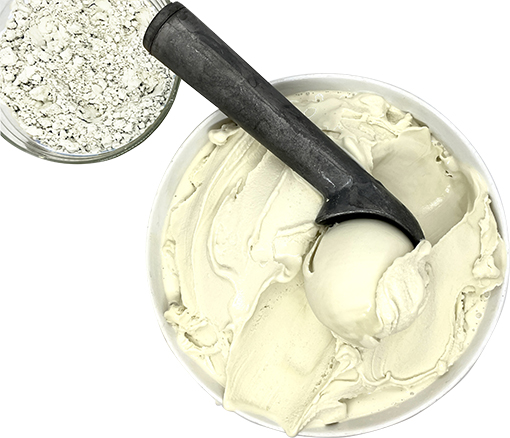
Sophie's Bionutrients
Eugene Wang, Co-founder & CEO of Sophie’s Bionutrients, often shares the story of his daughter’s allergic reaction to seafood and how it drove him to find newer, safer, and more viable sources of protein. Not only for his family but for the rest of the world, too. With urbanization, deforestation, and global warming on the rise, Wang, like many others in the industry, is concerned about the future of food. How and where it is grown, of course, but also the impact that traditional food production methods are having on human health and the planet.
“Soy is the dominant source of protein that we use today,” Wang begins. “It does not just feed people; it also feeds the animals we eat. It is even used in some pharmaceutical and cosmetic applications. But we all know how unsustainable the cultivation of soy is today. You only need to look at how the soy price index has increased during the past 10 or 20 years for evidence of that.”

The move toward sources of protein derived from microalgae not only made sense to Wang but is also one he fully embraces. “We believe microalgae can do better,” he says. “Not only is it a lot more sustainable to grow, but it also has better nutrients as well. We predict that microalgae will become the most dominant protein in the foreseeable future.” Among the benefits of microalgae cultivation that Wang lists – Including the small land mass needed for production, making it ideal for metropolitan areas – he stresses the lack of fertilizer, herbicide, antibiotics, or growth hormones as most important to consumers, alongside the nutritional element. “It all has to do with demand,” he says. And the secret to create the demand is [that] this new protein cannot just be new. It has to have all the nutrition requirements consumers are looking for.”
Like a number of cultivators, Sophie’s Bionutrients utilizes heterotrophic processes in ‘dark’ bioreactors instead of relying on light exposure for the algae’s growth. “Once you have light in the growing process of microalgae, they start to generate pigments and flavors that turn off most consumers,” says Wang. “And we don’t want to use too much processing to get that color and flavor off. That’s why we go dark.” When it comes to strain selection, health is also at the forefront of Wang’s mind. Selecting strains that are not considered novel foods is fundamental, as well as looking at the amino acid profile and potential allergens.
Maximizing sustainability
The company prides itself on re-using natural byproducts of other industrial processes in its own microalgae cultivation, including spent grain from breweries, okara – the natural byproduct of tofu and soy milk production – and molasses from sugar refineries. Waste reduction and the ability to recycle 90% of the water used in its cultivation is what makes algae such an appealing protein to manufacture. The short production cycle plays a role in water usage reduction as well. “Waste can be easily collected due to the fact that the whole operation [is] tightly controlled and managed in a confined system,” Wang reports. “Any way you look at it, this is the best technology for a sustainable future.”
We predict that microalgae will become the most dominant protein in the foreseeable future
Speaking of the future, what technological advances, scientific breakthroughs or social changes does he think might impact the production processes, uses, or desirability of algae cultivation? To answer this, Wang goes first to the past. “Fossil records suggest that algae were probably the oldest living organism on Earth. That’s likely the reason why microalgae [are] so resilient and dense in nutrients,” he explains. “With the advancements in AI and biotech, we believe that the ‘Future of Everything’ will have something to do with microalgae.
“Other than proteins, you can use microalgae to make fuel or cooking oil. You can use it to make materials to replace plastics. You can also use microalgae to develop safer and cheaper medicines. And since microalgae can be found on other planets, our Martian project may heavily rely on algae cultivation to sustain the lives of future astronauts. The possibilities are just endless.”

Algenuity
Despite many algae cultivators using similar processes and strains to create ingredients for the food industry, their strategies can vary greatly. “We refer to our products as white Chlorella rather than use the word ‘algae’ specifically,” says Andrew Spicer, Founder & CEO of Algenuity. “We also avoid positioning our ingredients simply as alternative proteins because they are much more than that, being whole-cell, free-from ingredients offering a nutritional, plant-based, and sustainable solution in the egg and dairy replacement sectors. It’s true that our ingredients include a protein component – with the protein being high in nutritional quality and able to function within various modalities in foods and beverages within which the ingredient is incorporated – but this is not all we offer.”
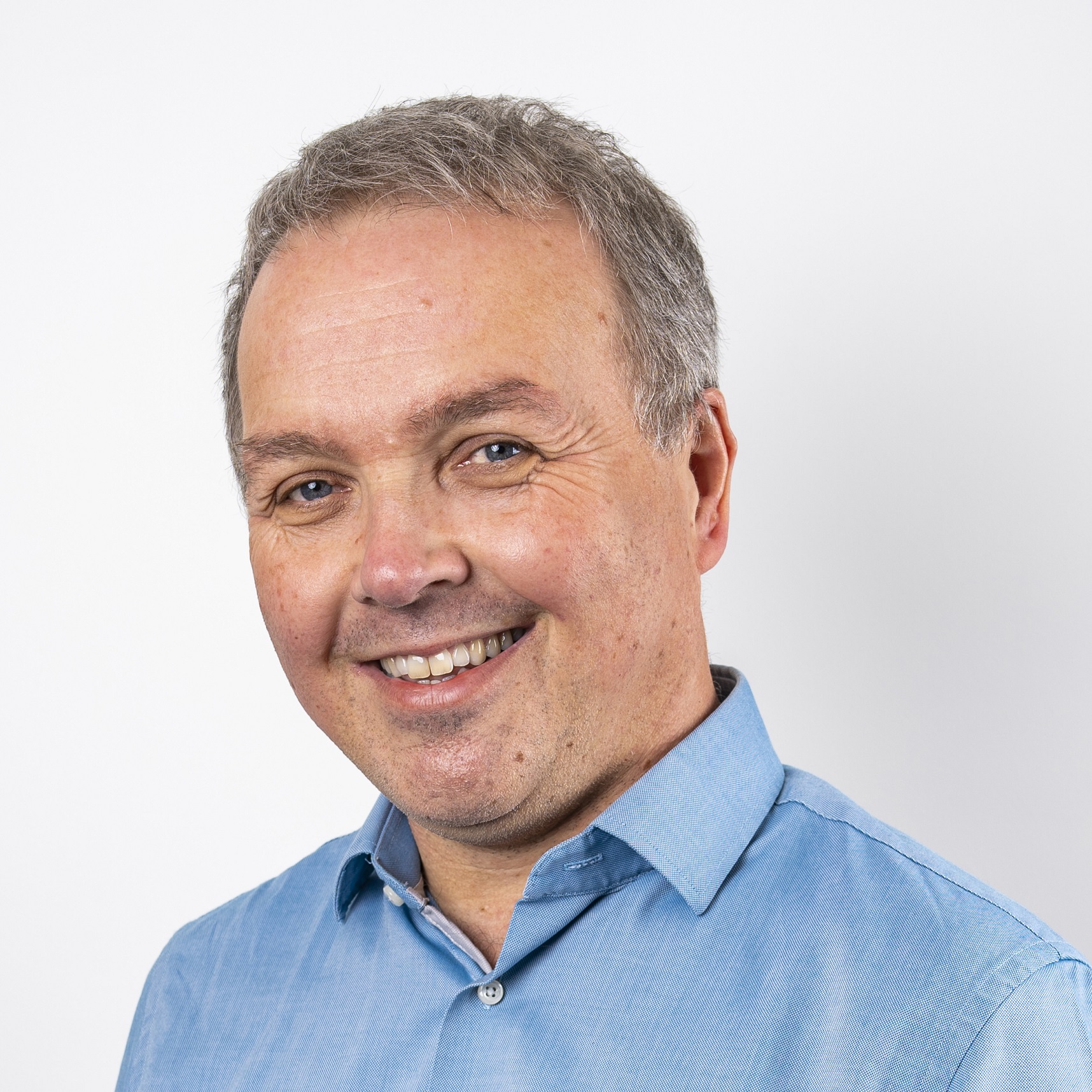
Strain selection is an important consideration for algae cultivators as well. Several criteria are taken into account, including growth rate, nutrient uptake and product yield, but there are others. “First and foremost, we start with algae strains that are confirmed to be species that have a substantial history of safe consumption and are not novel under European food regulations,” Spicer reports. “Our strains must also be highly productive by glucose fermentation in the dark. We use a careful directed evolution process to select strains with improved traits such as color – for instance white Chlorella as a final ingredient should be white and not brown or olive green in color – and biochemical composition, including relative protein content, all while maintaining productivity. Once we have selected our desired strains, we produce fully annotated genome sequences as part of our commitment to product safety and transparency.”
Controlled fermentation
Once fermentation of the chosen strains has been completed, there are various techniques available for harvesting and processing. Rather than extracting specific compounds from the biomass in its unprocessed state, many cultivators, like Algenuity, use centrifugation or filtration methods to separate the algae cells from the liquid it has been fermented in before employing a spray-drying technique. This preserves the integrity of the product as a whole-cell algae ingredient, the benefits of which are clear to Spicer. “By using highly controllable fermentation, product quality is routine to deliver,” he explains. The conditions for the fermentation and downstream processing are well established and proven at industrial scale and reduce the risk of contamination by algae or bacteria or yeasts as the system is closed, highly controlled, and fully sterilizable.”
Stepping away from the technical and into the practical, it’s important to consider the ingredients that are formed from these processes as well. White Chlorella, in particular, is favored by the egg and dairy replacement sector due to its relative neutrality in taste, odor and color, but there are many potential applications in the food industry. Demonstrating how versatile algae food products are, Spicer highlights the many uses for Algenuity’s ingredients. “Bakery products are a natural fit where our ingredients come into their own,” he remarks, “but there is also a strong fit within other food products including savory snacking, sauces, dressings, soups, and plant-based fish and seafood. Nutritionally, our ingredients are free from allergens, a complete source of protein, high in dietary fiber, low in saturated fats and sugars, and packed full of vitamins and minerals.” The consistency, adaptability, and diversity of microalgae is clearly part of what makes it such a desirable ingredient.
By using highly controllable fermentation, product quality is routine to deliver
When asked to describe how Algenuity minimizes the environmental impact of its processes, Spicer cites energy efficiency and water waste reduction as important benefits, while acknowledging that those processes can always be refined. “Technological advances could transform the process in terms of carbon footprint and supply chain robustness,” he reports. “Clean energy would also transform the energy requirements and overall impact of the process. We are continually improving our process to reduce the carbon footprint, water usage, and land use equivalence.”
For Spicer, having a deep understanding of the technical aspects of bioprocesses and how these are influenced by site-specific operations or input differences is key to delivering consistent production at scale. “Aligning market uptake with quality and volume expectations is the final challenge,” Spicer concludes. With the rapid pace of technological advances, it likely won’t be long before that final challenge is met.
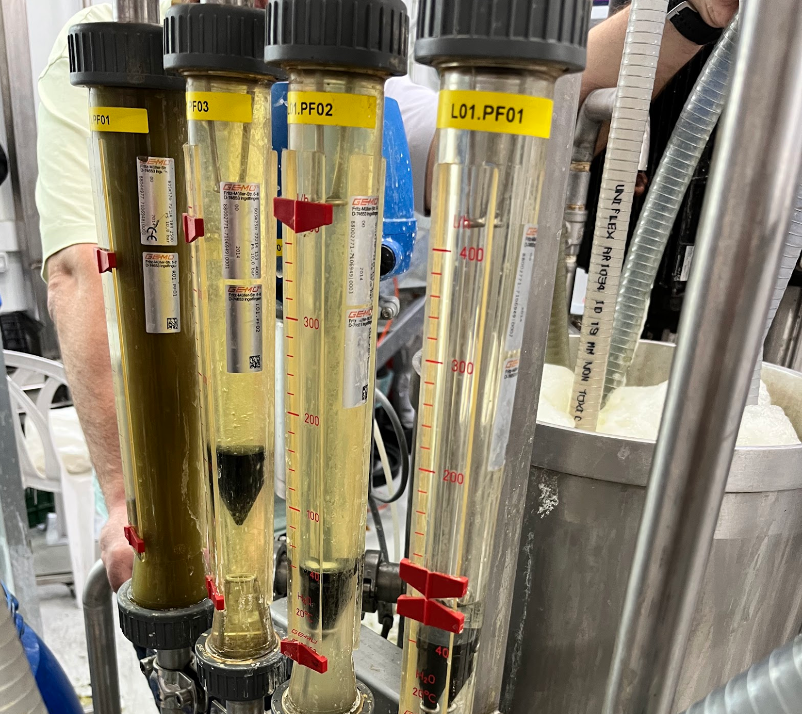
Genesea Advanced Technologies
Unlike many algae producers in the alternative protein industry, Genesea has a multifaceted approach to cultivation. The company employs a combination of offshore seaweed farming and controlled onshore methods to grow algae, providing flexibility and opportunities for growth in more ways than one. “Our offshore farms are strategically located in nutrient-rich waters, optimizing natural conditions for algae growth,” explains Alex Golberg, Co-Founder, Genesea Advanced Technologies. “Onshore facilities use advanced photobioreactors and open ponds, providing a controlled environment for strain-specific cultivation. These methods are highly efficient, with offshore cultivation offering scalability and low environmental impact, while onshore systems allow for precise control of growth conditions, ensuring consistent quality and yield.”
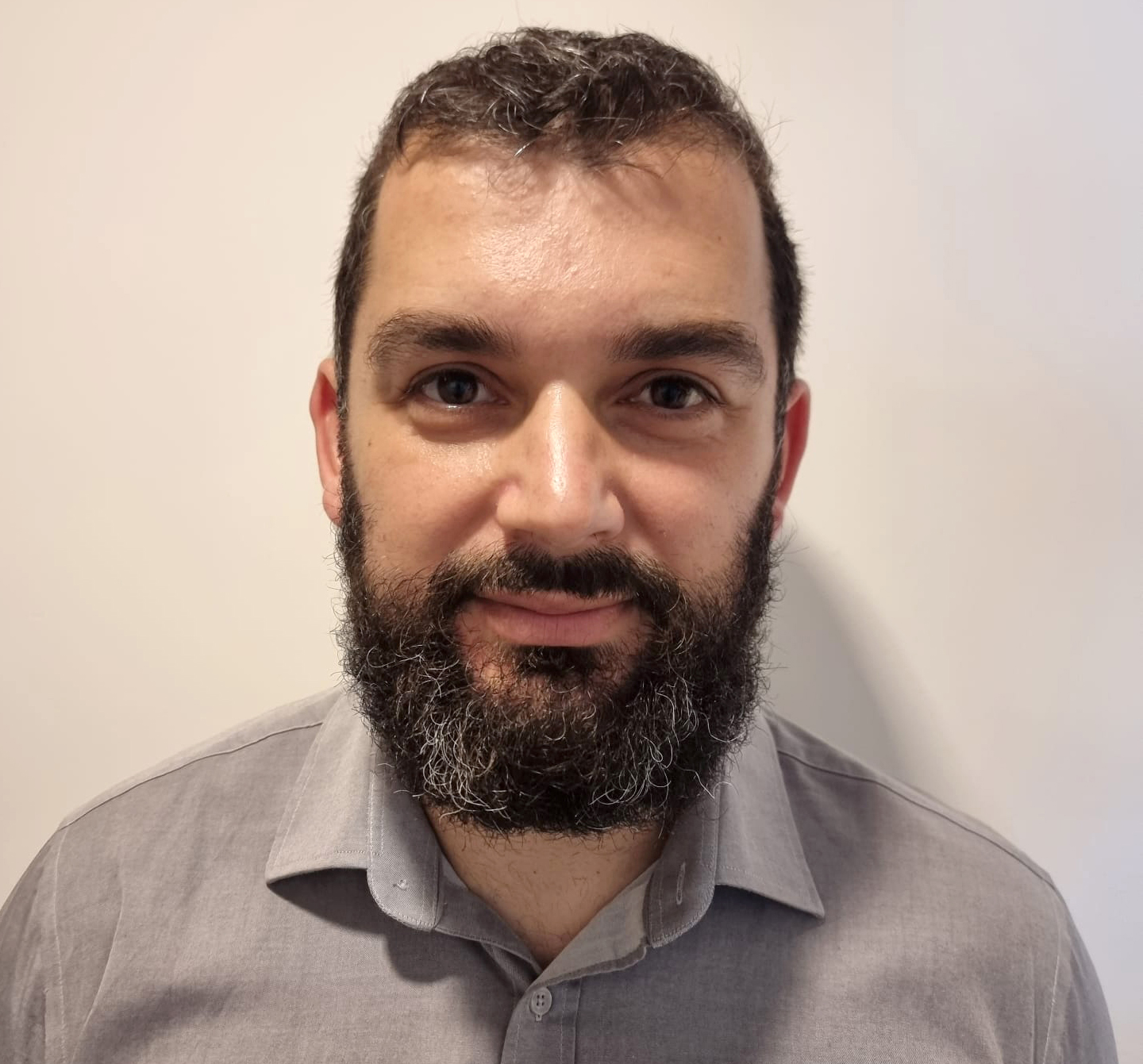
Genesea uses new technology for vertical farming in its offshore production, while its onshore production consists primarily of maximizing light exposure in the photobioreactors using special low-cost plastic sleeves that ensure even nutrient distribution. Both processes are designed to be environmentally sustainable. With minimal land and freshwater use, offshore algae farming also contributes to carbon and nitrogen capture and oxygen production. Goldberg reports that using renewable energy sources to power its onshore facilities and the implementation of closed-loop systems to reduce water and nutrient waste are core components of Genesea’s environmental commitment, with up to 92% of the biomass created by the biorefinery process used for food ingredients such as cellulose, lipids, starches, salts, and special sulfated polysaccharides.
Strategic strain selection
The cultivation method itself isn’t the only thing that matters though. On the topic of strain selection, Golberg says, “We select algae strains based on criteria such as growth rate, nutrient uptake efficiency, and the yield of target compounds. Our strain selection process involves screening multiple species for their ability to thrive in varying marine environments and their suitability for producing high protein content. We also consider factors such as resistance to pests and diseases, and adaptability to large-scale cultivation, ensuring that the chosen strains deliver optimal results for our specific applications.” This highly scientific and thorough approach is one of Genesea’s strengths, driven by its strong foundation in academic research on microalgae and seaweed cultivation, alongside its knowledge of the F&B industry.
Our strain selection process involves screening multiple species for their ability to thrive in varying marine environments and their suitability for producing high protein content
The harvesting and processing techniques Genesea utilizes vary for the different cultivation methods. “Our harvesting techniques involve a combination of mechanical and manual methods to ensure the integrity of the algae biomass,” says Golberg, talking us through what that looks like. “Processing involves cell disruption with innovative pulsed electric fields, protein extraction, and purification techniques that maintain high product quality and purity. We employ filtration, centrifugation, and advanced structure formation and drying methods to ensure that our algae-based ingredients meet stringent food industry standards.”
Scaling up algae production presents challenges for any operation, primarily in optimizing cultivation efficiency, maintaining consistent quality and reducing costs. Genesea addresses these challenges by investing in automation, developing partnerships with offshore farmers, and refining its processing technologies. “The increasing consumer demand for sustainable protein sources presents significant opportunities,” Golberg believes. “We always look for new partnerships for biomass cultivation and final application development.” For an organization that values a varied approach to cultivation, sharing insights and looking for new ways to diversify comes as no surprise.
Increased awareness of sustainable practices and climate change are increasingly driving consumer purchasing habits, boosting the desirability of algae as a food source. “We are closely monitoring these developments and are prepared to adapt our production processes to incorporate emerging technologies and meet future market demands,” Golberg states. Looking forward to potential food applications, Genesea anticipates the development of a range of products using algae ingredients, including plant-based protein supplements, functional food additives, and meat alternatives with commercial partners.
Reducing the food industry’s environmental footprint with sustainable, nutrient-rich food sources is what algae production is all about, and Genesea has positioned itself as a key player in driving the necessary innovations to do so. Golberg concludes, “With its high nutritional value, low environmental impact, and versatility in food applications, algae is increasingly recognized as a viable and desirable ingredient.”
%20copy.jpg)
Phycom
Technology in algae cultivation is constantly evolving, leading to better and more efficient processes. Being at the forefront of these technological advancements is something that Phycom is passionate about, allowing it to address global food shortages and deteriorating food quality. Anneke Roes, Phycom’s Marketing & Communication Manager, describes the Dutch company’s commitment to supplying quality ingredients to the food industry.
“At Phycom, we have developed our own innovative bioreactor cultivation and processing system,” she explains. “We exclusively use a heterotrophic cultivation system, which allows for more controlled and consistent growth. This remarkably efficient method enables us to produce high-quality algae with optimal yields and minimal contamination risks. Our focus on this advanced technology places Phycom at the cutting edge of algae production, ensuring that we can meet the growing demands of the food industry with precision and reliability.”

Choosing the most appropriate and robust strains for cultivation is a careful process with many criteria to be met. Like other cultivators, Phycom selects strains based on their growth efficiency, yield, potential, and nutrient content, ensuring they are rich in the essential components of a nutrient-dense biomass – proteins, fatty acids, vitamins, minerals, and antioxidants – and not classified and regulated as a novel food. From there, the selection process gets more specific. “We focus on strains that produce algae in unique and vibrant colors – red, yellow, and, soon, white – enhancing their appeal and versatility for a wide range of food applications.”
Extraction techniques
Innovation does not only extend to cultivation of the microalgae though. Applying a range of advanced extraction techniques has allowed Phycom to develop a highly effective processing method. “One of our key innovations is a gentle yet effective processing step, which breaks down the algae cells without compromising the integrity of the nutrients,” Roes reports. “This method ensures high product quality and purity. It also enhances the final product’s sensory properties, such as texture and taste.”
On the topic of texture and taste, what food products does Phycom primarily develop? “We are actively developing a range of innovative food products using our algae ingredients,” Roes tells us. “Notably, our algae have been successfully integrated into vegan milk chocolate and vegan crab cake concepts, where they enhance both nutrition and taste. These products address the growing consumer demand for plant-based alternatives that do not compromise on flavor or texture.” Keeping those components consistent is a priority for meeting consumer expectations and growing their trust in algae products.
Scaling up to meet demand while preserving the quality of its products is central to most microalgae cultivators’ commercialization strategy, and Phycom is no exception. With plans to increase production capacity to 1,700 tons of dry-weight biomass per facility, its focus is on building strategic partnerships with food industry leaders to bring its sustainable, nutrient-dense products to a broader market. “Our emphasis on quality, volume, economies of scale, sustainability, and innovation ensures we are ready to meet the growing demand for alternative protein sources,” Roes says.
With one of Phycom's four guiding principles being sustainability, some of the technological advances it utilizes are to further its environmental aims. “Our fully enclosed system ensures that all nutrients from the culture medium are converted into biomass, resulting in negligible waste,” Roes explains. “We are also pioneering a water-recycling system to reduce our water footprint further. Our cultivation processes are designed to be energy-efficient, and we are preparing a comprehensive LCA to quantify and publicly share the sustainability benefits of our operations.”
Our fully enclosed system ensures that all nutrients from the culture medium are converted into biomass, resulting in negligible waste
As the food industry faces mounting pressure to reduce its environmental impact, Roes believes that the innovative, sustainable solutions offered by Phycom can help lead the way, putting the firm at the forefront of a movement towards the future. “The European Green Deal and the Corporate Sustainability Reporting Directive will likely accelerate the adoption of sustainable practices across the food industry, creating new opportunities for algae as a key ingredient.” When technological advances, regulatory changes, and shifting consumer preferences converge at the same time, there is a real sense that large-scale changes are on the horizon – perhaps nearer than we think.
If you have any questions or would like to get in touch with us, please email info@futureofproteinproduction.com







